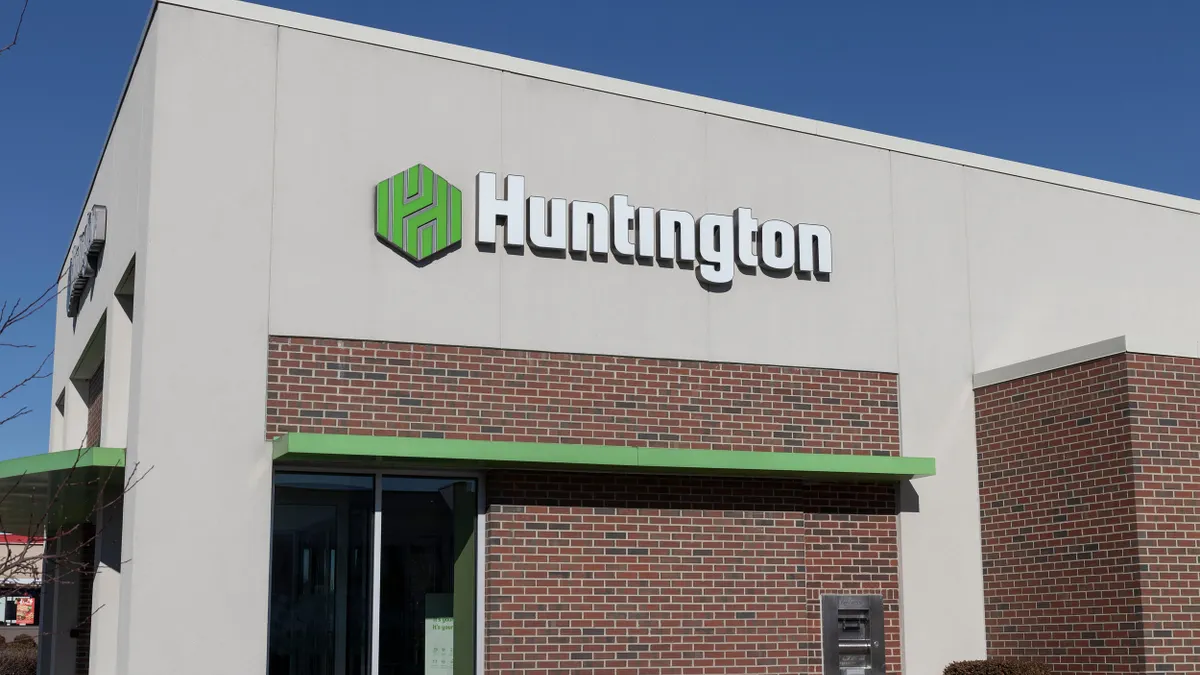To draw in new clients, Truist is doubling down on tweaks that make its digital banking experience more personalized and seamless, said Sherry Graziano, head of digital, client experience and marketing at the lender.
The Charlotte, North Carolina-based super-regional, which now has 7.3 million digital banking clients, has said enhancing client experience and growing digital capabilities are key parts of its overall strategy; both are efforts Graziano is squarely focused on.
“Continued focus on feature functionality delivery for different segments of clients,” she said, “is really important.” Giving the bank’s wealth clients the ability to self-serve with wire transactions, for example, was a function the bank saw immediate adoption of, she said.

Experience enhancements and marketing fueled 13% year-over-year growth in digital account sales in the first quarter, $536 billion-asset Truist said. About 69% of the bank’s transactions now occur digitally, as of the first quarter – up 10% from Q1 2024 – and the bank sifts through data and customer feedback for clues that inform its digital improvements roadmap, Graziano said.
After mobile identity verification was rolled out last year, it’s increasing conversion rates for younger generations during the account-opening process, bank executives have said. More than 60% of new-to-bank clients are millennial and Gen Z.
That verification tool allows for potential customers to take a selfie if step-up authentication is needed in the account sign-up process. Truist is looking to expand that function across product sets, and improve the tool by employing more advanced data matching and supporting a broader range of ID types, Graziano said.
Other enhancements to the onboarding process are in the works, including allowing for multiple account funding sources, and the bank is piloting digital direct deposit connectivity, she said. Much of what the bank prompts customers during the onboarding process – setting up direct deposit and Zelle, for example – helps to drive primacy, which Truist has been intently focused on lately.
“We're always focused on, how can we ensure that you not only open your account, but you have seamless integration with all the different capabilities we offer?” Graziano said. “So that roadmap will continue, again, all focused on client feedback.”
The bank has sought to streamline that endeavor with an artificial intelligence-powered tool dubbed Truist Client Pulse, which aggregates customer feedback from a variety of sources.
Graziano pointed to allowing customers to tailor their mobile app dashboards by choosing their top tasks as an example of the concentration on personalization in digital banking channels. That focus has also resulted in Truist Insights, an AI-powered tool that serves up nuggets of information in mobile and digital channels, Graziano said.
That tool “will tell someone ‘hey, you might be getting ready to go negative, and there’s a balance buffer opportunity,’” which can help a customer avoid overdrawing, she said. “Our goal is to give them the insights, so that they can be in a position to be proactive.”
In the first four months of the year, the bank delivered about 175 million insights to clients, who see roughly 11 unique insights per month, on average, she said.
With customers logging in on their mobile devices about 18 times a month, Truist aims to seize those moments. “Those are all opportunities to surface up real-time insights and messages that matter to clients,” she said. About 70% of Truist’s 7.3 million digital clients are active on the bank’s mobile app.
Like other big banks, Truist is increasingly focused on offering more capabilities through digital channels while making sure more complex or emotional needs can be handled by employees. The bank’s virtual assistant is now seeing 500,000 chats per month, on average, and is able to handle a customer’s inquiry without needing to involve a Truist employee about 80% of the time, Graziano said.
Truist’s digital efforts may be crucial to counterbalance its physical changes: Branch closures within its Southeast footprint have contributed to the bank’s retail share decline in some markets in recent years, Truist Securities analyst John McDonald said in a recent note. Truist “has lost ~360bps … of retail share in the SE states since 2019,” he wrote.
The bank declined to share an expectation for technology spending for the year or how much it’s invested in the mobile app in particular. Its first-quarter filing noted professional fees and outside processing – which technology expenses fall under – jumped 31% year over year, due in part to larger tech investments.
As the bank hews closely to what its customers want, Truist brings clients in to test new capabilities under consideration, to ensure it’s on the right track.
“In some cases, we'll say something’s interesting, but clients didn't like it, or they found it hard to use,” Graziano said. “So before we just go push something into production, let's go make a change.”






















